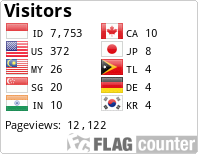GAMBARAN KADAR HEMOGLOBIN PADA PENDERITA HIV DENGAN PENGOBATAN ANTIRETROVIRAL DI KOTA KENDARI
DOI:
https://doi.org/10.46356/jakk.v4i1.169Keywords:
HIV, AIDS, Antiretroviral, HemoglobinAbstract
ABSTRAK
Human Immunodeficiency Virus (HIV) merupakan retrovirus yang menyerang sistem kekebalan tubuh
manusia. Penderita HIV harus memakai obat ARV seumur hidup yang berfungsi untuk mencegah replikasi virus
HIV di dalam tubuh. Efek samping dari penggunaan obat antiretroviral akan dalam jangka lama akan cenderung
menekan sel darah merah atau menghambat pertumbuhan sel-sel hematopoetik pada sumsum tulang penderita
HIV/AIDS, sehingga mengalami penurunan kadar Hemoglobin. Penelitian ini dilaksanakan di Laboratorium
Klinik Politeknik Bina Husada Kendari pada bulan Maret-April 2019. Tujuan dari penelitian ini untuk mengetahui
hasil pemeriksaan kadar hemoglobin pada pasien HIV dengan pengobatan antiretroviral di Kota Kendari. Jenis
penelitian yang digunakan adalah deskriptif dengan melakukan pemeriksaan kadar hemoglobin pada 20 sampel
penderita HIV/AIDS menggunakan metode autoanalyzer. Dengan teknik pengambilan sampel secara accidental
sampling yaitu siapa saja yang bertemu dengan peneliti dapat digunakan sebagai sampel. Hasil penelitan
diperoleh kadar hemoglobin yang normal sebanyak 14 orang (70%), dan kadar hemoglobin rendah sebanyak 6
orang (30%). Jenis kelamin laki-laki lebih dominan dibanding perempuan yaitu jumlah pasien laki-laki sebanyak
15 orang (75%) dan perempuan sebanyak 5 orang (25%).
Kata Kunci : HIV, AIDS, Antiretroviral, Hemoglobin
ABSTRACT
Human Immunodeficiency Virus (HIV) is a retrovirus that attacks the human immune system. HIV
sufferers must take lifelong antiretroviral drugs used to prevent the replication of the HIV virus in the body. Side
effects from the use of Antiretroviral drugs will tend to suppress red blood cells or inhibit the growth of
hematopoietic cells in the bones of people with HIV / AIDS, resulting in a low decrease in hemoglobin. This
research was carried out at the Hematology Laboratory of Bina Husada Polytechnic Kendari in March-April 2019.
The purpose of this study was to determine the results of hemoglobin level examination in HIV patients with
antiretroviral treatment in Kendari City. The type of research used was descriptive by examining Hemoglobin
levels in 20 samples of HIVAIDS patients using the autoanalyzer method. With sampling teachniques using
accidental sampling whoever meets the researcher can be used as a sample. The results showed that normal
hemoglobin levels as much 14 people (70%) and low Hemoglobin levels as much 6 people (30%). Male sex is
more dominant than women, namely the number of male patients is 15 people (75%) and women are 5 people
(25%).
Keywords : HIV, AIDS, Antiretroviral, Hemoglobin
Downloads
Published
Issue
Section
License
Authors who publish on JAKK can share their research in a number of ways. JAKK does not impose an embargo on published journals, meaning that researchers can access it openly after the article is published. Researchers who have subscribed to access to articles can also share.
JAKK already uses the Open Journal System (OJS) thereby enabling the final version of all published research articles to be placed in any digital archive immediately after publication. JAKK can automatically make feeds of open access articles available to any repository that wishes to receive them.
Authors who publish with this journal agree to the following terms:
* Authors retain copyright and grant the journal right of first publication, with licensed under a Creative Commons Attribution ShareAlike 4.0 International License (CC BY-SA 4.0) that allows others to share the work with an acknowledgement of the work's authorship and initial publication in this journal.
* Authors are able to enter into separate, additional contractual arrangements for the non-exclusive distribution of the journal's published version of the work (e.g., post it to an institutional repository or publish it in a book), with an acknowledgement of its initial publication in this journal.
* Authors are permitted and encouraged to post their work online (e.g., in institutional repositories or on their website) prior to and during the submission process, as it can lead to productive exchanges, as well as earlier and greater citation of published work.







2.jpg)

